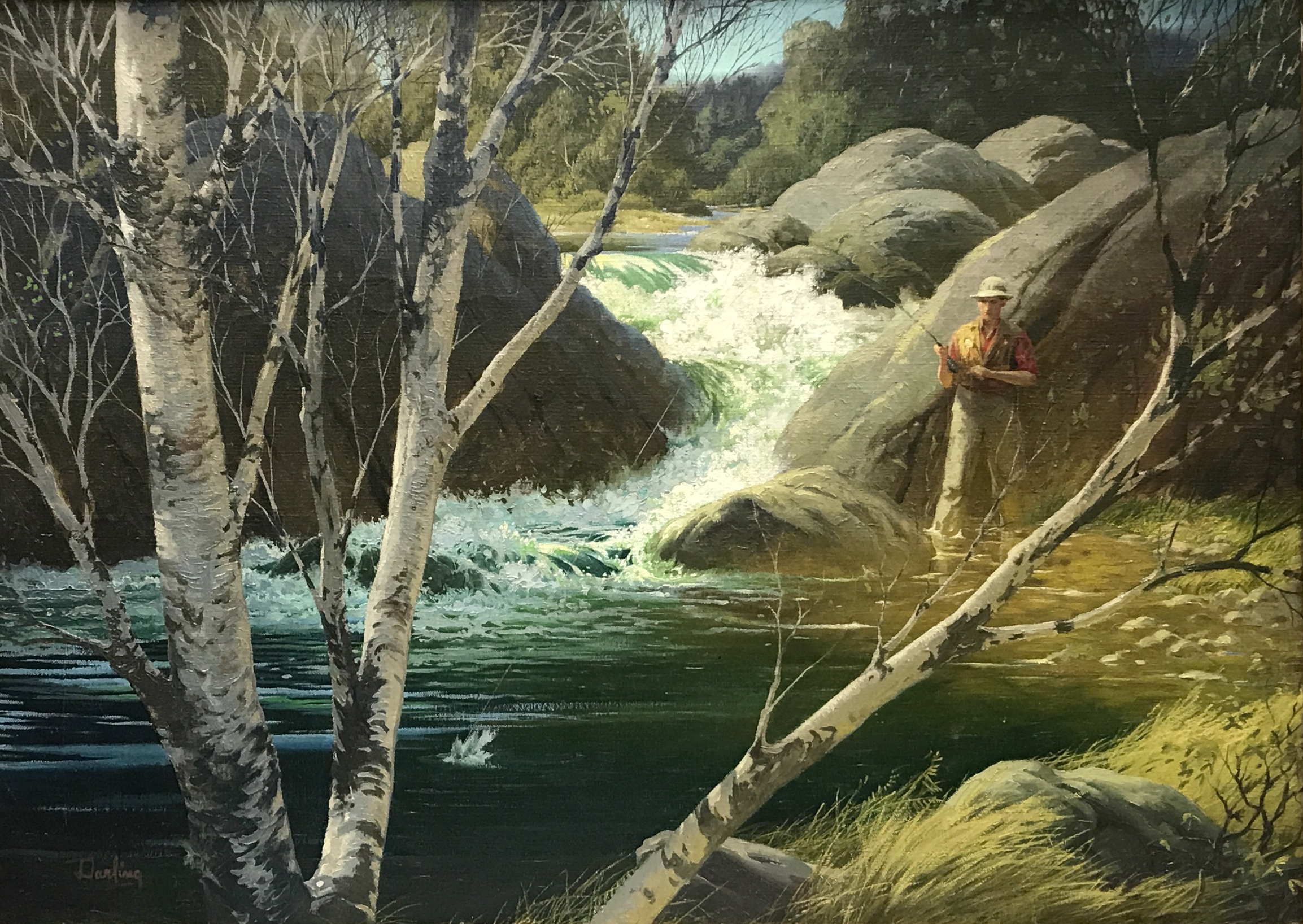Fishing Below the Falls
Looking out from the riverbank through the branches of a mature birch tree, we watch an angler hooking a fish in Jay Norwood Darling’s Fishing Below the Falls. Darling’s cinematic perspective presents the scene from the tree’s vantage point, developing a sense that the landscape is also watching the angler cast into the waters that pool on its surface. Darling was never afraid to place himself in nature’s shoes and speak out on behalf of the land. He carried this bold demeanor throughout his career as a Pulitzer Prize–winning cartoonist and as one of the nation’s leading conservationists in the early twentieth century.
Jay Norwood Darling’s ties to the natural world were deeply rooted in his childhood memories of growing up in Sioux City, Iowa, on the western frontier. When he was not in school, Darling explored the surrounding wilderness, hunting and fishing. During summers he worked on his uncle’s farm and later herded cattle through the South Dakota prairies. Over his lifetime, Darling witnessed the destructive impacts of society’s aggressive consumption of natural resources firsthand as the places he knew as a child became unrecognizable in his adulthood; even his uncle’s farm was not spared. These experiences were formative in his fight for conservation legislation throughout his life. One of Darling’s many achievements was the implementation of the Federal Duck Stamp, a migratory bird hunting and conservation stamp. Since its launch in 1934, the Federal Duck Stamp has funded the protection of more than 5.7 million acres of habitat within the National Wildlife Refuge System.
This meticulous study of the birch tree articulates Darling’s admiration of the natural world. He was a perfectionist, as is evidenced in the tree’s finely detailed branches. As a cartoonist, he was known to ignore deadlines to master small details before sending his drawings to print. Darling must have taken his time to complete Fishing Below the Falls. From the patterns in the tree bark to the luminosity of the low sun as it catches the steep angles of the rocky landscape and the fine spray off the rapids, every element of Darling’s painting comes together in homage to nature’s resilience and beauty.
Darling owned a fishing cabin off Captiva Island, Florida, where he spent his winters saltwater fishing and creating art. His cabin survives today, purchased in the late twentieth century by contemporary artist Robert Rauschenberg, who shared Darling’s passion for conservation and preservation.
Jay Norwood “Ding” Darling (American, 1876–1962)
Fishing Below the Falls, early 20th century
oil on canvas
2019.051.148


